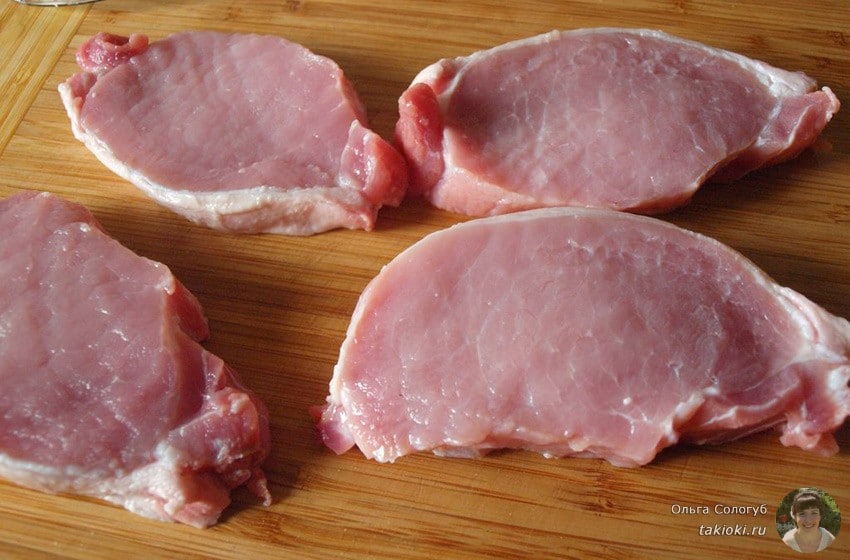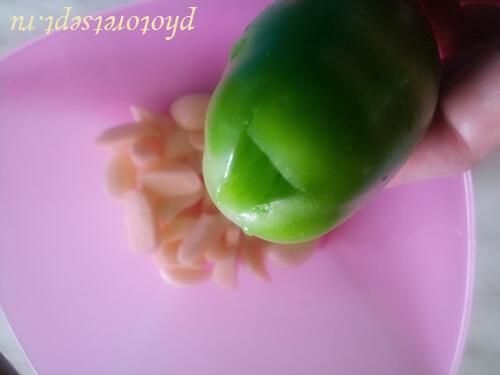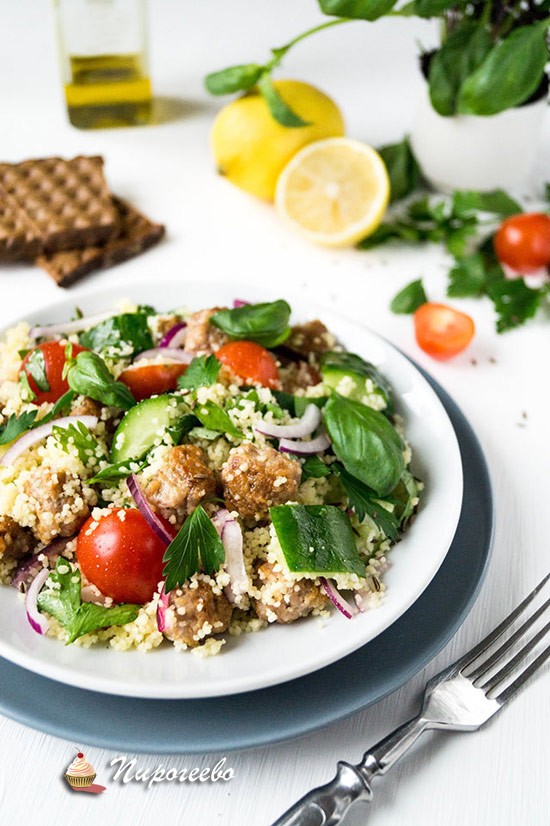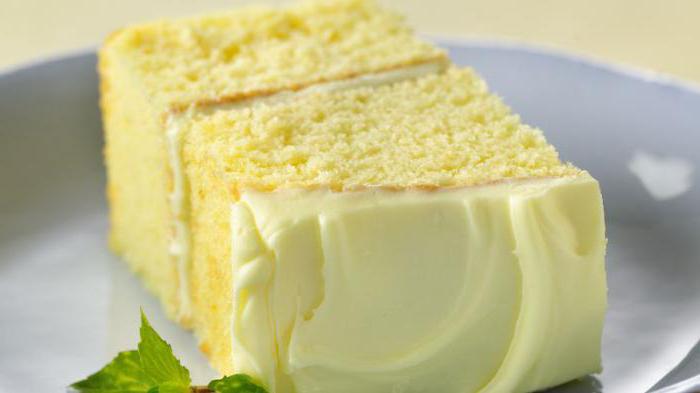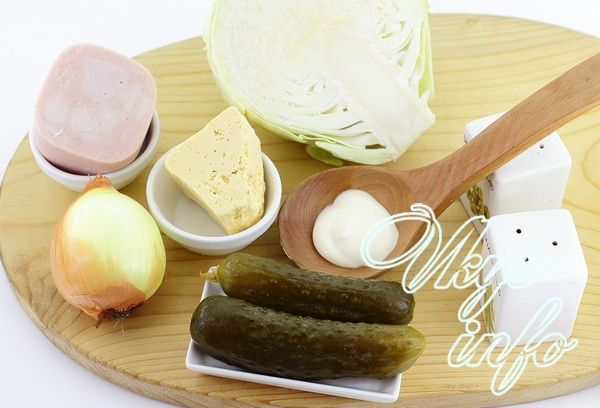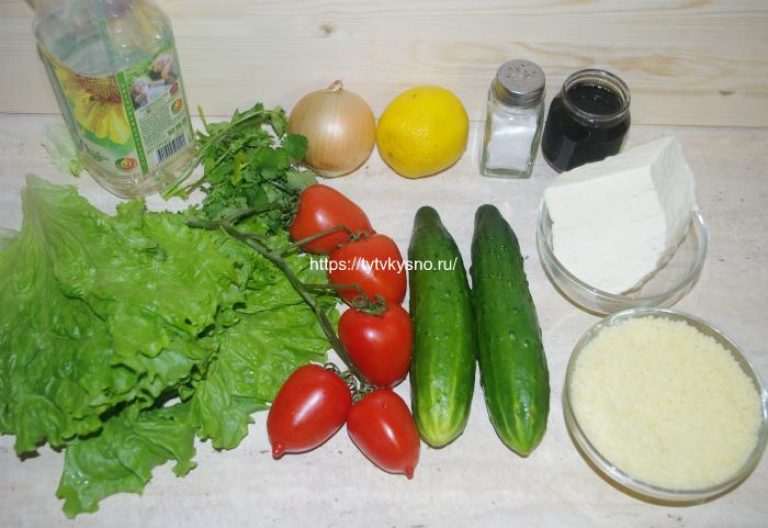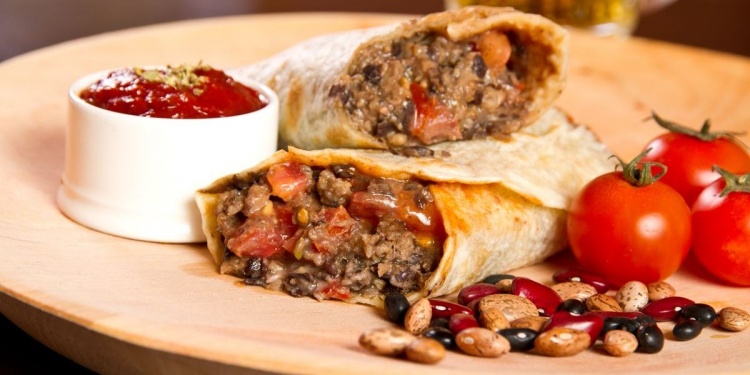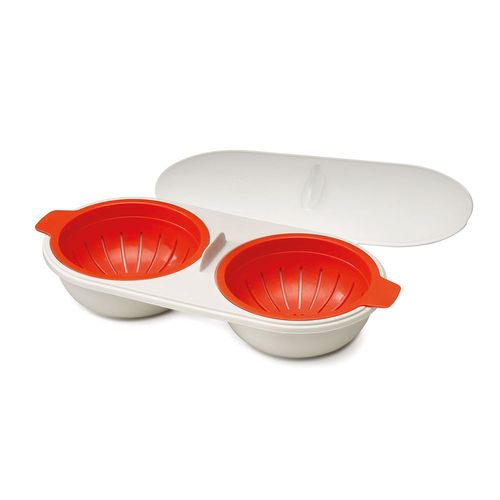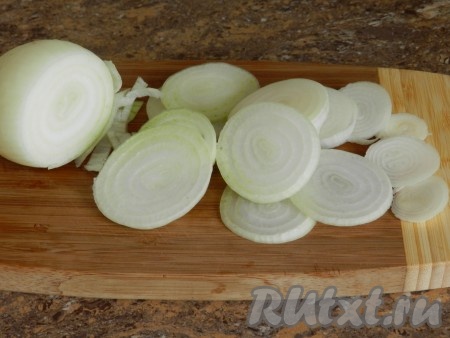Is it possible to eat mint fresh: features of use. Healing taste of peppermint coolness and its useful and culinary properties
Peppermint is used to flavor fruit gravy, frozen drinks, jellies, sauces, to perfume vinegar, tea blends, bread kvass, confectionery, alcoholic and tobacco products, fish products, and pickling cucumbers. When salting cabbage, cabbage mint provides long-term storage and gives the cabbage excellent taste.
Adding peppermint to milk prevents souring and increases shelf life. For flavor, mint is placed in tomato juice and various fruit and vegetable salads. Fresh mint leaves improve the taste of roasted lamb, chicken, liver, lamb. It is added to stewed cabbage, carrots, leeks, peas.
In Europe, mint wines were periodically insisted. And in Russia with mint they prepared a hot drink sbiten on honey. In the East - sorbets, refreshing drinks with ice, which also added mint. And in Europe, mint drinks were thickened and finally became liqueurs, for example, the sugary emerald Cremedementhe. Summer cocktails with the addition of mint are also good, for example, Mojito, beloved by many.
Fresh mint leaves in cooking are often used to decorate dishes, including sweet ones. In the culinary arts, peppermint is also used as a food coloring. Since fresh peppermint withers very quickly, it must be kept in a cool place, best in the refrigerator. As a result of heat treatment, mint loses freshness, so it should be added to hot dishes immediately before serving.
Species of mint, there are quite a lot, but only some of them are widely used in cooking. The application of each of them has its own nuances.
Peppermint
It has a refreshing bitter taste. In cooking, it is used as a spice mainly only in the distillery and confectionery industries, where usually they do not use peppermint itself, but peppermint oil or peppermint essence.
At home, peppermint should be used in confectionery products very carefully, because if it overheats or exceeds the dose, it can ruin the whole thing, giving the product a bitter taste. It is introduced into cookies, gingerbread cookies, rolls, fruit drinks, jelly, fruit drinks, tinctures, kvass. It is not suitable for making tea due to its bitter taste.
Lemon mint (lemon balm)

Popular in European and Arabic cuisines. Finely chopped leaves added to summer salads make them healthier, more aromatic, tastier. Dried herbs are added to vegetable, meat and fish salads in the winter. Melissa goes well with game, veal, pork, lamb, fish. A delicate aroma is acquired by vegetable, mushroom, milk and egg dishes, as well as fruit, pea and potato soups, seasoned with lemon balm.
Spice is used for canning cucumbers, to which it gives a pleasant smell and strength. In Moldavian cuisine, melissa is put in the filling of fresh or for pie.
Curly Mint

It does not have a cooling taste, but has a wonderful refreshing aroma. It is widely used in home cooking in fresh and dried form. Fresh mint leaves are added to salads, soups, especially vegetable ones. In the cuisine of some peoples, they are placed in seasoning in milk soups. Dried mint leaves are great for flavoring meat dishes, pastries and pastries, as well as sauces. In Ukrainian cuisine, it is added to dishes of fish and mushrooms. It is especially widely used in home canning of apples and vegetables (cucumbers, cabbage, carrots). Like some other types of mint, curly mint gives a wonderful aroma and taste to tea.
Apple Mint

It has an extremely delicate aroma and taste, not accompanied by cooling. It absolutely does not give bitterness when heated and increasing the amount, which is radically different from most other types of mint. Apple mint is used mainly in the cooking of the peoples of Transcaucasia and Central Asia. In Georgia, it is used for making sauces, in Armenia it is added to some varieties of cheese, and in Central Asian countries it improves the smell and taste of mutton dishes. They also add it to sweet dishes: compotes, jelly, jelly, preserves, apple pie fillings, and various confectionery products.
Spicy mint (elsgolzia)

Dried buds and flowers collected at the very beginning of flowering are used as spice. It has a delicate pleasant aroma reminiscent of lemon balm, but more spicy. Spicy mint is added mainly to minced meat, offal pastes, home-made sausages, and is used for stewing lump meat, as well as for flavoring, snacks, sandwiches and soups. Doses when added to minced meat can be quite significant, as elsgoltia almost does not give any bitterness when heated. Like marjoram, spicy mint has a noble effect on the consistency of meat.
Mint is a medicinal plant that has been known to people since antiquity. Mint of different varieties can be found on every household plot, it is very popular all over the world. Unfortunately, the summer season, when mint can be consumed fresh, is not so long. For this reason, the leaves of this fragrant plant are harvested for future use. And a dryer for vegetables and fruits can help you with this.
History of Dried Mint
An ancient Greek legend says that the nymph Mint, whom Hades fell in love with, was turned by his wife Persephone into a plant. Hades, in memory of his beloved, gave this plant a gentle pleasant aroma, and in honor of Mint, the plant was called mint. In ancient times, mint was revered for its healing properties.It is known that in ancient Rome, mint was widely used as a natural flavoring. Tables were rubbed with mint water, dried mint was hung in feasting halls to cheer you up, and many famous generals believed that the aroma of mint promotes concentration.
In ancient Greece, a dried mint drink was considered an aphrodisiac. And the dried bundles of mint found in the tombs of the pharaohs prove that the plant was used as incense. The ancient Greeks loved to eat peppermint.
Mint was also revered in Russia. Tea with mint is one of the drinks that have come down to our days since antiquity. And on Troitsyn Day, young girls and boys laid mint under the pillow to see the narrowed in a dream. Subsequently, this sprig of mint was dried and stored at home.
How to choose mint for drying?
Dried mint can be stored all winter without losing its fresh aroma of healing properties. The main thing is to know how to properly prepare it. Dried mint in a pharmacy is usually sold in powdered form, so it is not clear what exactly is part of the raw material - stems or leaves. But when preparing mint, this point is important to consider.If you want to prepare mint stems, then wait for the plant to bloom. This happens closer to mid-summer. Flowering time is the most favorable for drying exactly mint stems.
It doesn’t matter what type of mint you are going to prepare for the winter - the Isidri dryer will help you maintain the maximum nutrients and the natural color of mint. Fragrant dried mint will be an excellent seasoning for any dishes. Its refreshing taste will remind you of the summer, and the beneficial properties of this medicinal plant will help to maintain health.
Dry, enjoy!
In the article we discuss peppermint - medicinal properties and contraindications to its use. You will learn the chemical composition of the plant, and how it is useful for female and male health. We will tell you how to use mint in the treatment of gastritis, pressure, runny nose and burns. Following our advice, you will learn how to prepare decoctions, infusions, oil and drops from a plant.
A little about mint - this is a herbaceous plant of the family Lamiaceae (lat. Lamiaceae). The Latin name is Mentha piperita. Other names: motherboard, breastplate.
Appearance (photo) of mint
The genus Mint (lat. Mentha) unites 42 species of plants. Peppermint is a hybrid of water (Latin Mentha aquatica) and garden (Latin Mentha spicata) variety.
Mint cultivation is possible in gardens, on personal plots and at home. Learn more about home growing from. They are grown commercially in the Voronezh region and the Krasnodar Territory.
This is an unpretentious plant that can be grown even on the windowsill. It prefers moist, loose soil. Mint is propagated by layering, cuttings and division of the rhizome.
The plant has a fibrous horizontal rhizome. The upright stalk reaches a height of 100 cm. The shoots are branched, densely covered with leaves.
The leaves are opposite, pointed, oblong-ovate. The edges of the leaf plate are sharp.
Small light violet flowers are collected in half-whorls and form spike-shaped inflorescences. Peppermint flowering occurs in June-September.
The fruit consists of four nuts. The plant bears fruit very rarely.
The chemical composition of mint
What is part of the medicinal herb:
- menthol;
- essential oil;
- routine;
- saponins;
- fatty oil;
- resins;
- phytosterols;
- tannins;
- ascorbic acid;
- caffeic acid;
- oleic acid;
- chlorogenic acid;
- ursolic acid;
- carotene;
- arginine;
- glucose.
Due to its rich composition, the plant has a whole range of healing properties..
Nutritional value and calorie content
100 g of mint contains 3.8 g of protein, 0.9 g of fat, 14.9 g of carbohydrates, 8 g of dietary fiber, and 78.6 g of water.
Calorie content per 100 grams - 70 kcal.
How to harvest and store
Harvest mint in June - July, cut only fully blossomed plants. Collect during the day in dry weather, when there are no dew drops on the leaves.
It is better to carefully cut the plant, and not to tear it with your hands. You can harvest whole bushes as well as individual leaves. Put the cut mint in the shade, in the sun it will lose most of the essential oils, and hence its beneficial properties.
Rinse immediately under cold running water immediately after collection, and dry thoroughly on paper or ordinary towels for several hours. Then spread the mint in one layer on paper, dry in a shaded and well-ventilated place for 3-5 days.
Store in glass jars or linen bags. Shelf life - no more than 2 years.
How to choose a spice
When buying spices in the store, pay attention to the packaging, it should be:
- tight, check whether it is spoiled or opened;
- opaque so as not to let the sun in.
Also, do not forget to check the expiration date and pay attention to whether the spice is stored in a dry place in the store, without access to sunlight.
Beneficial features
The healing properties and contraindications of the plant are in its composition. The main component is menthol, which normalizes the work of the cardiovascular, nervous, digestive and genitourinary systems.
Mint treats digestive system diseases. It eliminates heaviness in the stomach, flatulence and has a choleretic effect. Effectively relieves nausea, has a calming effect on the gastric mucosa.
Also beneficial for the liver and gall bladder. It is used to cleanse these organs of toxins and toxins, it helps to remove stones.
Peppermint decoctions, infusions and teas are used for bronchopulmonary diseases. The plant eliminates inflammatory processes in the bronchi and helps to remove sputum from them. Peppermint relieves the symptoms of a cold and has a diaphoretic effect.
It is also used in dentistry. The plant disinfects the oral cavity. It is useful for stomatitis, gingivitis, periodontal disease.
Mint for women
The benefits of peppermint for women's health are its beneficial effect on the condition of the skin and hair. The plant has nutritional, strengthening and protective properties.
Mint is used in gynecology for the treatment of inflammatory diseases. A decoction of the plant is added to the sitz baths. Such procedures have analgesic and anti-inflammatory effects.
Peppermint for men
Medicines based on plants increase potency and normalize blood circulation in the pelvic organs. Peppermint has a negative effect on men's health only with regular overdose. The herb is useful in moderation - 1-2 cups of mint tea per week.
A decoction of grass is used externally for washing feet. This procedure helps eliminate unpleasant odors and reduces sweating.
Cooking Application
In cooking, fresh and dried mint leaves are used. Spice is added to sauces, salads, drinks. Grass is combined with lamb, poultry, cheeses, fruits and vegetables.
Peppermint oil is used in the confectionery industry. It is added to pastries, creams, desserts.
Application in cosmetology
 In cosmetology, peppermint essential oil is used.
In cosmetology, peppermint essential oil is used.
Peppermint extract is used in the cosmetic industry. It is added to creams, lip balms, masks and hair shampoos.
Peppermint regulates the production of sebum, tightens pores and cleanses the skin. Plant-based cosmetics are used to care for oily and combination skin.
Peppermint is suitable for any type of hair. Peppermint shampoos and balms nourish dry hair, reduce the oily scalp and improve the appearance of curls.
Mask for the face
Mint nourishes and tones the skin. A decoction of the plant is used to wipe the face in the morning and evening. Peppermint oil is combined with other ingredients and masks are prepared on their basis. Such funds are suitable for problematic and oily skin.
Ingredients:
- Yellow clay - 1 tablespoon.
- Peppermint essential oil - 2 drops.
- Almond oil - 2 teaspoons.
- Lemon oil - 1 drop.
- Water - 1 tablespoon.
How to cook: Dilute the clay with water, stir until smooth. Add oil and mix.
How to use: Wash, blot excess liquid with a dry cloth and apply a mask. Rinse off with warm water after 15 minutes, when the clay dries. After the procedure, moisturize the skin with cream.
Result: The mask enhances the blood supply to the skin, eliminates inflammation and reduces the epidermis oiliness.
Hair Mask
A decoction of the plant is used to rinse the curls after washing the head. Peppermint extract is added to the finished cosmetic hair care products or homemade masks are made on its basis. They are suitable for oily hair.
Ingredients:
- Peppermint oil - 2 drops.
- Jojoba oil - 20 ml.
How to cook: Heat jojoba oil in a water bath to 36-37 degrees, add peppermint oil, mix. The amount indicated in the recipe is for medium-length hair.
How to use: Rub the resulting mixture of oils into the scalp with massage movements. Comb your hair with a frequent comb to distribute the mask over the entire length of the hair. Wrap your head in polyethylene, insulate with a towel and hold the product for 2 hours. The mask can be left all night. Next, rinse your hair with water and lemon juice (1 teaspoon of juice in 1 cup of water) and rinse with shampoo.
Result: The mask prevents hair loss, accelerates hair growth and improves appearance.
Application in traditional medicine
 In home medicine, decoctions, infusions, drops and oil are made from mint
In home medicine, decoctions, infusions, drops and oil are made from mint
In folk medicine, mint leaves are used as a medicinal raw material. Raw materials are harvested during the flowering period of the plant. For the therapeutic use of medicinal herbs, infusions, decoctions, oil are prepared on its basis.
Like any other medicinal plant, mint has its own consumption rate, exceeding which leads to negative consequences. The daily rate of fresh mint leaves is up to 15 g, mint drinks - no more than 2 glasses.
You have learned about the methods of use and contraindications of peppermint. Let's take a closer look at the recipes for preparing plant-based medicines.
A decoction for gastritis
A decoction of the medicinal herb normalizes the digestive tract, cleanses the body of decay products and increases appetite. The drink is used to prevent and treat gastritis and other indigestion.
Ingredients:
- Leaves of the plant - 1 tablespoon.
- Water - 500 ml.
How to cook: Pour mint leaves with boiling water, put in a water bath and simmer for 10 minutes. Remove from heat, cover, warm with a towel and insist for at least 15 minutes.
How to use: Take ½ cup 3 times a day.
Result: Drink reduces the acidity of gastric juice, eliminates inflammation and pain.
Infusion of pressure
Ingredients:
- Dried grass - 1 teaspoon.
- Water - 200 ml.
- Honey - 1 teaspoon.
How to cook: Grind the leaves, fill with boiling water, cover and let it brew for 20 minutes. Dissolve a spoonful of honey in the drink.
How to use: Take 1 tablespoon of the drink 3 times a day.
Result: Infusion reduces blood pressure, calms the nervous system and normalizes sleep.
Oil for burns
Such an oil is used as an antiseptic to treat skin diseases and restore the epidermis after burns. The product eliminates inflammation and accelerates skin healing.
Ingredients:
- Dried Mint - 100 gr.
- Vegetable oil - 200 ml.
How to cook: Cut the raw materials, put them on the bottom of the glass bowl, fill with oil preheated to 37 degrees and tightly close the lid. Insist remedy for 8 weeks. Shake the oil periodically. Strain the finished product through cheesecloth and store in the refrigerator.
How to use: Apply oil to damaged areas of the skin and leave until completely absorbed.
Result: Means accelerates regeneration, softens skin and prevents formation of scars.
Cold drops
Peppermint drops are used to treat a runny nose and relieve inflammation of the upper respiratory tract. They effectively eliminate the hoarseness of the voice. Menthol is a part of pharmaceuticals for the treatment of the common cold.
Ingredients:
- Leaves of the plant - 10 gr.
- Water - 300 ml.
How to cook: Grind the mint leaves, pour boiling water over them, cover and leave for half an hour. Filter the finished product through a double layer of gauze. Keep in the refrigerator.
How to use: Drop 2 drops of the product into each nostril.
Result: Drops facilitate breathing, relieve inflammation and swelling of the sinuses.
Read more about mint in the video:
Use for weight loss
Peppermint is used for weight loss. Tea is brewed and added to food during cooking. The smell of mint reduces appetite, and the chemicals in its composition soothe the nervous system. By removing the overexcitation of the central nervous system, the feeling of hunger is dulled. The process of losing weight is becoming less alarming.
Peppermint cleanses the body of toxins. And if you add a piece of ginger to the tea, the drink will help speed up the metabolism.
To make tea, a few mint leaves are brewed in a glass of boiling water or green tea, they are drunk in 1-3 cups a day. Do not overdo it with this drink if you have low blood pressure or bradycardia.
Contraindications and side effects
Before starting treatment with peppermint-based products, consult a specialist. The doctor will prescribe a suitable dosage and course of administration. An overdose of mint leads to drowsiness.
Contraindications to the use of medicines based on herbs:
- low blood pressure;
- during pregnancy and breastfeeding;
- children under 6 years old;
- individual intolerance.
You have learned about the benefits of peppermint medicines and contraindications to their use. To summarize.
What to remember
- Peppermint is widely used in cooking, cosmetology and home medicine, and is also used for weight loss.
- The beneficial properties of mint and contraindications to its use are in the composition of the plant.
- Plant-based products have antispasmodic, anti-inflammatory, analgesic effects.
- Before using peppermint as a medicine, it is necessary to consult a specialist, especially during pregnancy.
Various herbs and seasonings can be used not only to give a special taste to tea or food, for many of them there are much more options for use. You might not even have guessed some of them. Today we’ll talk about mint. This herb not only has an excellent fresh aroma, but can help you out in so many situations.
Abdominal cramping
Peppermint helps to relax the muscles of the digestive tract and relieve cramping. Therefore, if your stomach suddenly twisted on nervous soil, drink hot tea with mint or just warm water with mint and lemon.
Infectious Disease Prevention
Peppermint has quite strong antibacterial properties. Regular inclusion of it in your diet will help your body more easily transfer or even repel infectious and fungal diseases.
Mouse fight
If at the dacha or in the yard of your private house you plant a little mint, be sure that mice and rats will bypass your site!
Soothing Foot Scrub
The refreshing properties of mint are associated with the menthol content in it, which will soothe the feet so tired during the day. Mix finely chopped mint leaves with sea salt and olive oil, rub the feet with this mixture and rinse with water.
Headache relief
Headache is often associated with spasms of blood vessels. Just like with abdominal pain, warm mint tea or just mint water will help.
Against nasal congestion
Impossible to breathe? Brew mint with hot water (or tea again) and inhale by breathing in menthol vapor. The action will be almost the same as from drops for the nose, but this method is natural and cheaper.
Relieve stress
Peppermint is a wonderful light and natural sedative that will help you reduce stress and relieve anxiety.
Cancer Prevention
Research is currently underway on the effects of mint on the formation of cancer cells. It is believed that it significantly slows down their development, especially for cancer of the skin, lungs and colon. Currently, there is no sufficiently reliable evidence, but still there is a chance that soon we will have another weapon against a deadly disease.
Salad dressing
Want to add some variety to your vegetable salad? Add a few mint leaves to it. Your taste buds will simply sing with pleasure.
Add peppermint to cosmetics
Making homemade soap or shampoo, in principle, is not so difficult. And with mint, homemade cosmetics will acquire an amazing aroma. Peppermint essential oil can be found in a specialty store or just in a pharmacy. By the way, a drop of oil can be added to factory creams and shampoos.
Peppermint ice
Feel that mint already needs to be used urgently, as it starts to deteriorate? Make ice with mint leaves. Then these cubes can be put in water, lemonade or iced tea, thus adding a fresh note to the drink.
Refreshing facial toner
Pour cold water into a large bowl and crush the mint leaves. Refrigerate for an hour. Then immerse your face in this mint water. You will feel incredible vigor!
Refresh the carpet
Sprinkle the carpet with a mixture of dried mint and baking soda, leave for an hour, and then vacuum clean. The room will smell of cleanliness and intoxicating freshness.
Make an air freshener
To do this, just mix the mint with any other flowers or petals and arrange these fragrant mixtures around the room.
Refresh your breath
Mix peppermint oil with baking soda and hydrogen peroxide - you get homemade toothpaste, which will whiten your teeth and freshen your breath. However, do not get carried away, such a mixture can be used no more than once a week (or better less often), since it corrodes tooth enamel.
How do you use peppermint? Is there any way that we did not mention in the article? Share it in the comments.
Peppermint is widely used in cooking around the world, this is one of the most common and popular spices. Dried and fresh mint leaves are added to desserts, meat dishes, and pastries. Perhaps few spicy plants can boast of such versatility.
In cooking fresh and dried mint leaves and flower buds are used. Most often, dried mint is sold in the form of a powder, but if you harvest the mint yourself, it is advisable to leave the leaves whole - the mint flavor is better preserved. You can grind immediately before adding.

But the most used in cooking dried mint. In many recipes for making homemade sausages, minced meat from various types of meat, pastes - especially from the liver, dried mint is mentioned. It helps to improve the taste of the finished dish, and in some cases to muffle the specific aroma of any semi-finished product. Peppermint sauce is perfect for any meat or poultry dish.
Cakes and pies, cakes, gingerbread cookies - mint is no less popular in baking. It is added to flavor the dough, in some countries they make a mint broth on which the dough is kneaded.

From time immemorial to the present day, mint is an indispensable ingredient in making soft drinks. Especially popular is mint tea, which is not only very tasty and fragrant, but also very healthy. Mint is added to kvass and fruit drinks, compotes, jelly, pear, syrups. But not all types of mint are suitable for making drinks. Peppermint gives the drinks a light bitterness, especially when heated and if the mint tea is infused for a long time. Other types of mint have no obvious bitterness.


